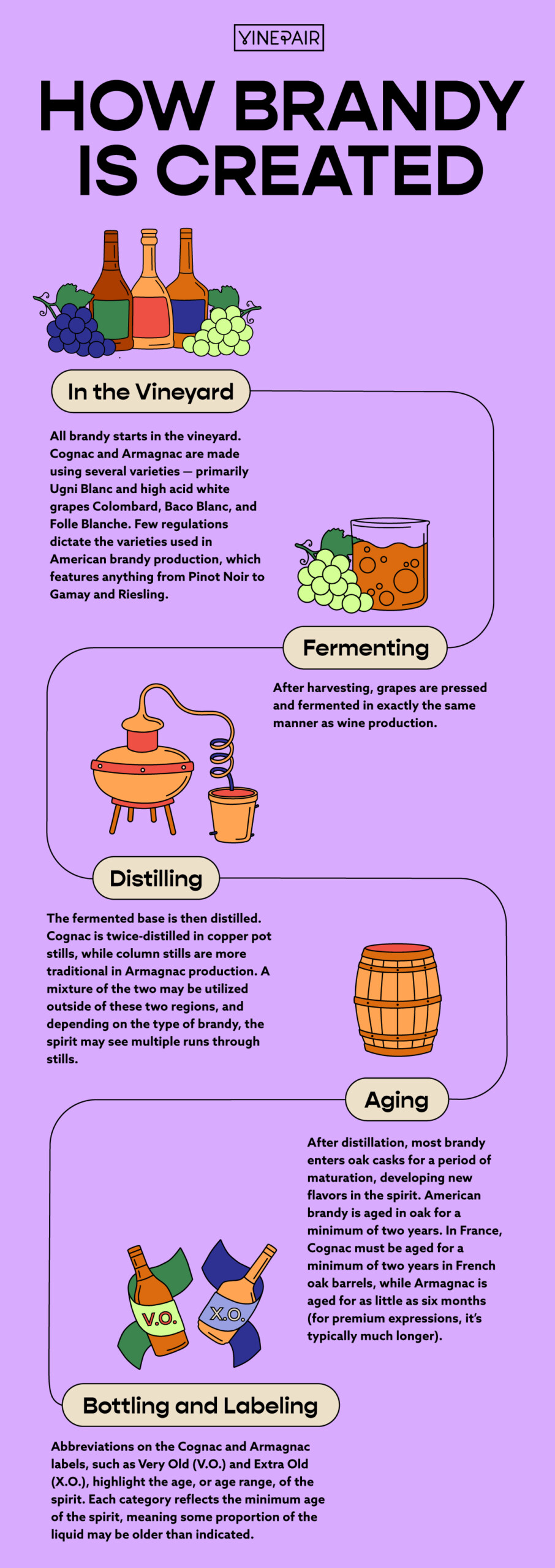Today’s brandy takes on numerous shapes and forms, delighting drinkers with unexpected expressions of the classic distilled wine. It’s often a favorite when enjoyed in cocktails such as the Sidecar and Brandy Crusta. If we’re talking old, old school, brandy even featured in early-1800s Mint Juleps. The distilled spirit also packs a punch as an after-dinner digestif when enjoyed by itself.
While brandy can be created anywhere in the world, the most well-known versions — Cognac and Armagnac — hail from two southwest regions in France. Grape-based brandies also abound in other countries, including the United States where it has deep, historical roots. Other styles of brandy might be created from apples (i.e. Calvados) or cherries, while famed Italian brandy grappa is based on the leftover pomace from winemaking.
While this infographic focuses primarily on grape-based expressions of brandy, fruit-based versions are also enjoyed worldwide. Follow the spirits’ journey, from vine to aged, distilled wine, in the graphic below.

![How is Brandy Created? [Infographic] How is Brandy Created? [Infographic]](https://vinepair.com/wp-content/uploads/2022/08/how-is-brandy-created-card-375x450.jpg)